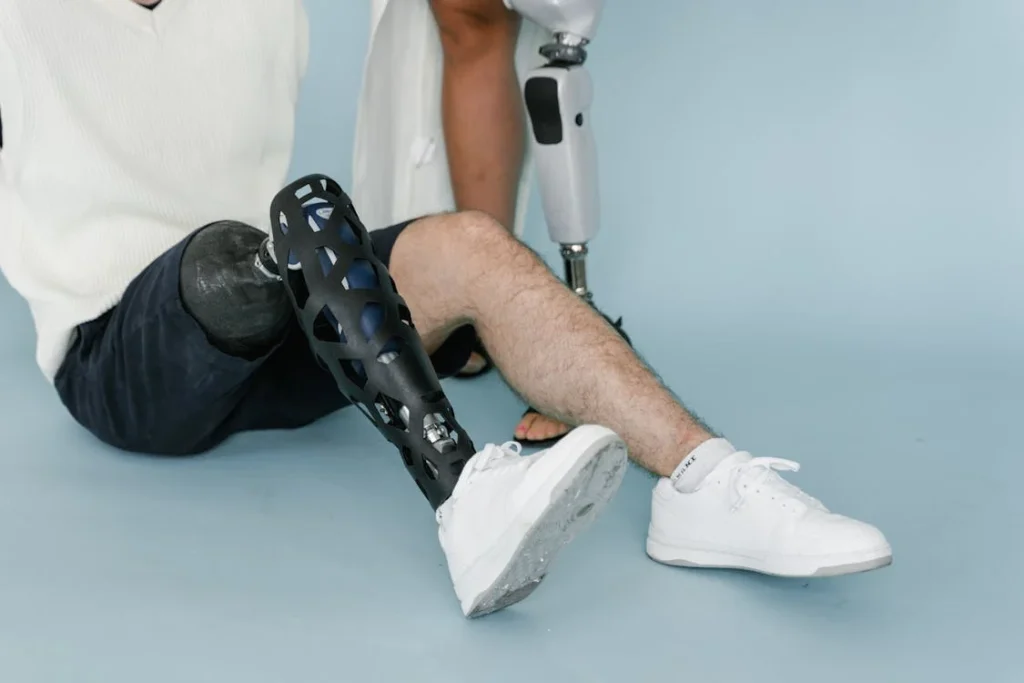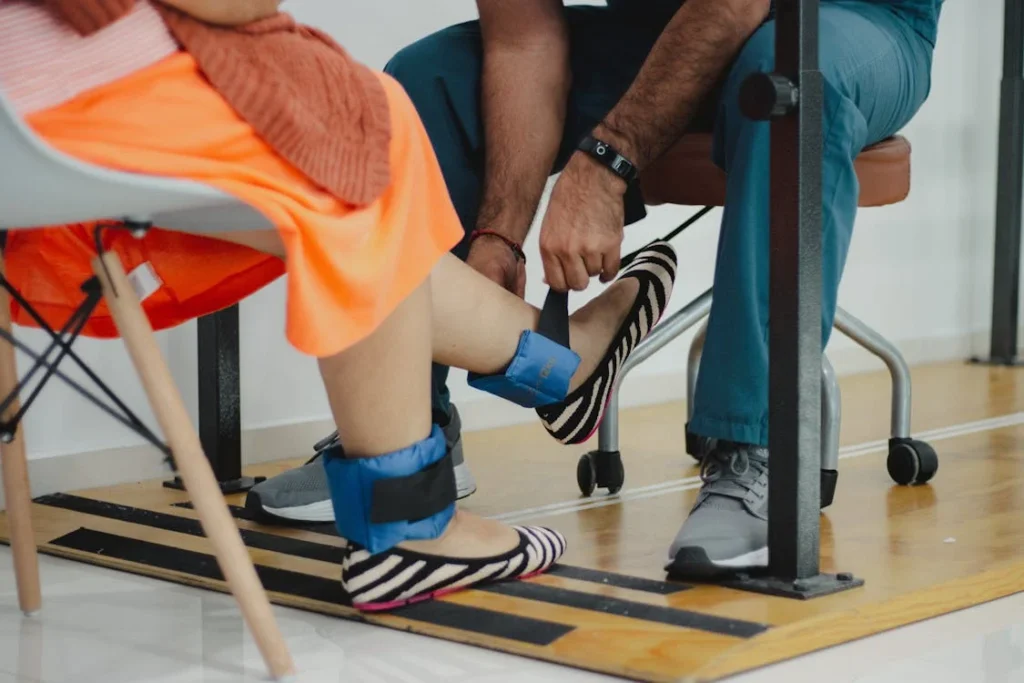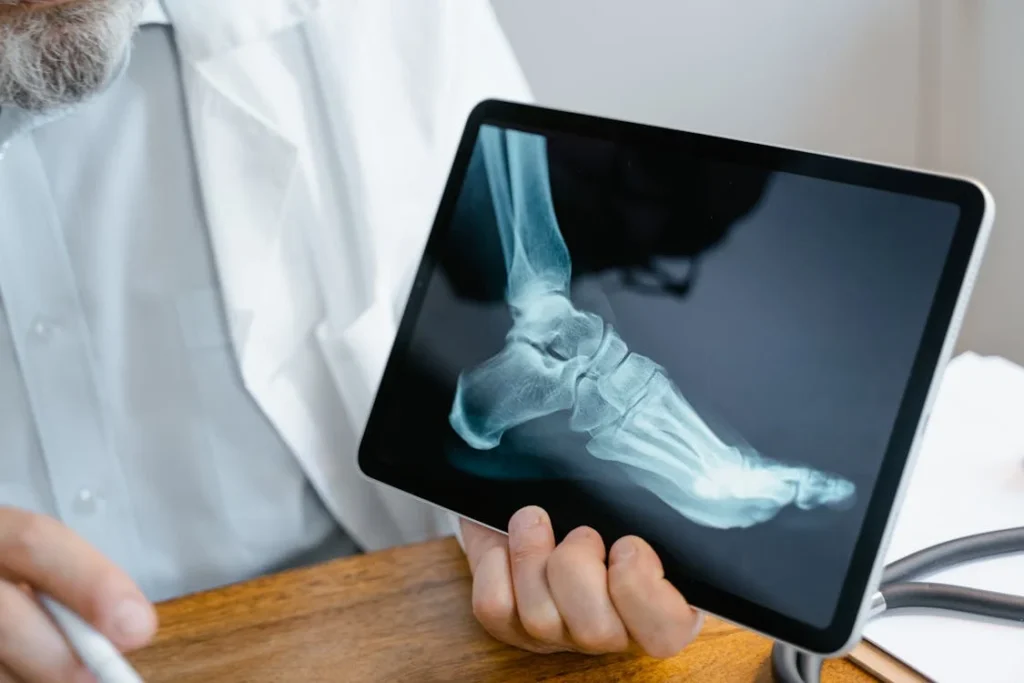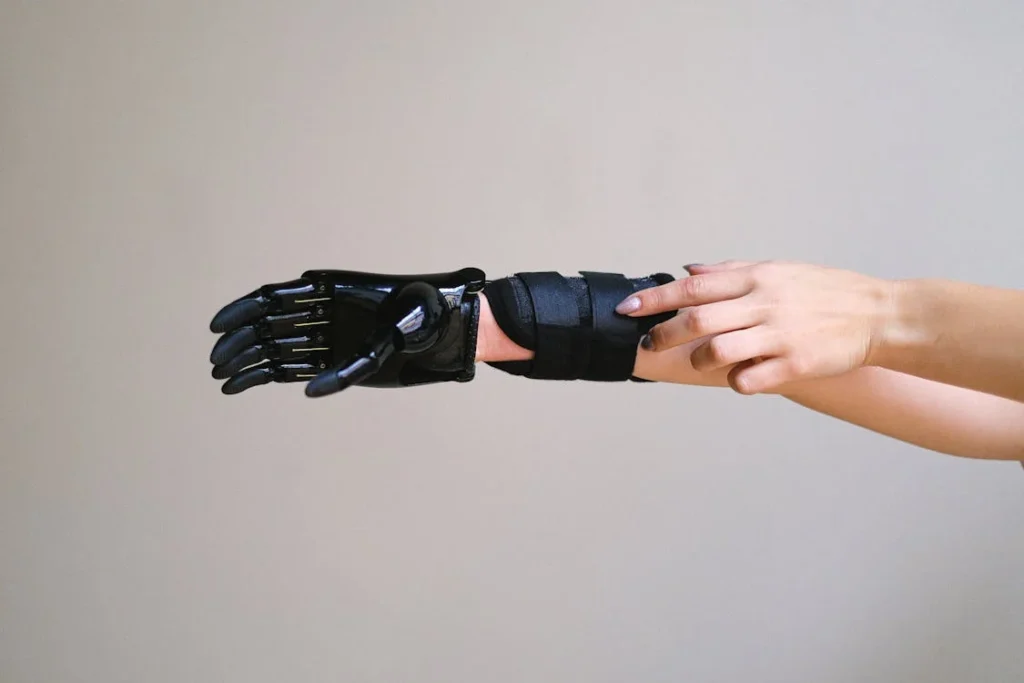After an amputation, healing the residual limb is one of the most important steps toward recovery. This area, sometimes called the stump, needs time, care, and attention to heal properly. But healing isn’t just about waiting. It’s about knowing how to support the body so it can do its job—repairing tissue, reducing swelling, and getting ready for a prosthetic limb.
One of the key parts of this healing process is blood flow. When blood moves well through the body, it carries oxygen and nutrients to the tissues that need them most. Good circulation helps prevent infection, reduces pain, and speeds up healing. Without enough blood flow, wounds take longer to close, and problems like stiffness or nerve pain may become worse.

Why Blood Flow Matters for the Residual Limb
The Role of Circulation in Healing
The body is always working to heal itself. After surgery, especially an amputation, that work becomes even more important. The body must rebuild tissue, close wounds, and adjust to new ways of moving.
None of that happens without strong blood flow. Blood is what brings oxygen and nutrients to the cells. It also carries away waste products and supports the immune system in fighting off infection.
When circulation is poor, the healing process slows down. The wound may stay open longer, and the risk of infection goes up. You might feel more pain, or the area might stay swollen and tight.
Good blood flow isn’t just helpful—it’s necessary. It helps reduce inflammation, supports tissue growth, and keeps the nerves and muscles around the limb healthy.
In the case of the residual limb, healthy blood flow also prepares it for the next stage: using a prosthetic. If the limb is not well-healed, it can be painful or uncomfortable to wear a socket.
The skin might be too sensitive. The muscles might not be strong enough. That’s why improving circulation isn’t just a medical goal—it’s a personal one. It’s what helps you move forward.
What Affects Blood Flow After Amputation
Several things can slow down circulation after surgery. Swelling is a common one. Right after an amputation, the body sends fluids to the area as part of the healing process.
This can put pressure on the blood vessels and make it harder for blood to move freely. Over time, if the swelling doesn’t go down, it can create long-term issues with healing.
Lack of movement is another factor. When a person spends too much time lying down or sitting still, blood starts to pool in certain areas. The muscles aren’t pumping the blood back up toward the heart the way they normally would.
This is especially true in the legs. And for someone healing from a lower limb amputation, this becomes even more challenging.
Sometimes, underlying health conditions also make circulation harder. Diabetes, heart disease, and smoking are some of the most common issues that affect blood vessels. These conditions can cause the arteries to narrow, reducing the amount of blood that reaches the limb.
That’s why working closely with your healthcare provider is so important. Managing these conditions can have a big impact on healing.
Emotional stress can even play a role. When you’re anxious or feeling low, your body goes into a kind of alert mode. Blood gets sent to the heart and lungs, but less of it may go to the limbs.
Over time, this can also affect recovery. Healing is both physical and emotional—and understanding this connection helps you take better care of your body as a whole.
Signs Your Limb Needs Better Circulation
The body often gives small signals when blood flow isn’t what it should be. You might notice that the residual limb feels colder than the rest of your body.
The skin could appear pale, bluish, or slightly shiny. You might feel a tingling sensation or numbness. Sometimes, the limb feels heavy or “asleep,” even if you haven’t been resting on it.
These are all signs that circulation could be improved. If you experience any of them often, it’s a good idea to talk to your doctor or rehab specialist.
They can help identify the cause and guide you toward the right steps to fix it. That might include physical therapy, medication, or small changes in daily habits.
Pain is another key signal. While some pain is expected during healing, especially in the first few weeks, ongoing pain that doesn’t get better could point to poor circulation.
This includes sharp pain, burning, or an aching feeling that doesn’t go away after rest. Don’t ignore these signs. Your body is asking for help, and there are ways to respond early before the issue gets worse.

Gentle Ways to Boost Blood Flow During Recovery
The Power of Movement, Even in Small Doses
One of the most effective ways to improve blood flow is by simply moving. Movement helps the muscles push blood through the veins and back toward the heart. Even small movements matter.
You don’t need to run or lift weights. Just shifting position, stretching gently, or flexing your muscles can make a big difference.
For someone healing from an amputation, early movement often begins in bed or from a seated position. It may include slowly bending and straightening nearby joints like the knee or hip. If the upper limb was affected, it might be simple shoulder rolls or arm raises.
These motions aren’t about exercise—they’re about circulation. They help keep the blood moving and prevent it from pooling in one area.
Your therapist may guide you through some of these early movements. They’ll likely show you how to do them safely so you don’t put pressure on the healing site.
Over time, as your strength grows and your body gets used to the activity, you’ll be able to do more. But even in the beginning, every small action counts.
Consistency is key. Doing a little each day is better than doing too much all at once. The goal isn’t to tire the body but to remind it how to move.
This steady routine helps build both strength and better blood flow, which speeds up recovery and prepares the limb for more complex movements down the road.
Elevation: A Simple Technique With Big Results
Another helpful tool during the early days of healing is elevation. When you raise the residual limb slightly above the level of your heart, it helps reduce swelling. This gives blood vessels more room to work and encourages better circulation.
Elevation is easy to do at home. You might use a pillow to support your limb while lying down or resting in a chair. Just make sure the support is gentle and not cutting off circulation. The idea is to let gravity assist your body in draining extra fluids and improving flow.
It’s best to elevate the limb several times a day for short periods, especially if you notice swelling. You don’t need fancy tools—just a little time and awareness.
Over time, this habit supports better tissue health and can make a big difference in how quickly you heal.
Elevation can also help reduce discomfort. When there’s less pressure from fluid buildup, the limb feels lighter and more comfortable.
This makes it easier to move and stretch, creating a positive cycle where movement leads to better blood flow, and better blood flow leads to more comfort.
Compression When Recommended
In some cases, your healthcare provider might recommend gentle compression for the residual limb. This is often done using a soft bandage or shrinker sock, especially after the initial surgical swelling has gone down.
Compression helps shape the limb, reduces fluid buildup, and encourages steady blood flow.
However, compression should always be used under medical guidance. If it’s too tight, it can block blood flow instead of helping it.
That’s why proper fitting and instruction from your care team are important. Never use elastic bands or self-made wraps without approval.
When used correctly, compression becomes part of your healing routine. It helps the limb stay firm and reduces the risk of long-term swelling, which can slow down healing.
It also prepares the residual limb for a prosthetic fitting, making the transition smoother when the time comes.
These small, manageable steps—movement, elevation, and compression—work together to support your body. They may seem simple, but they have a powerful impact.
Healing is not about one big solution. It’s about doing the right things, steadily and consistently.

Supporting Circulation Through Nutrition and Hydration
Feeding the Body for Better Blood Flow
What you eat directly affects how well your body heals. Food is more than just fuel—it’s information for your cells. After an amputation, your body needs certain nutrients to rebuild tissue, repair skin, and keep blood vessels healthy.
Choosing the right foods can improve circulation, reduce inflammation, and speed up the healing of the residual limb.
One of the most important building blocks is protein. This helps your body make new cells and repair damaged ones.
Protein also plays a role in forming new blood vessels, which is essential for bringing fresh oxygen to the healing area. Simple sources like eggs, lentils, yogurt, or lean meats can go a long way in supporting this process.
Iron is also key. It helps your red blood cells carry oxygen through the bloodstream. Without enough iron, circulation slows down, and tissues don’t get the nutrients they need.
Iron can be found in foods like spinach, beans, and whole grains. If your levels are low, your doctor may suggest a supplement.
Other important nutrients include vitamin C and zinc. Vitamin C helps build collagen, a protein that holds your skin and tissues together. It also helps your body absorb iron.
Zinc plays a role in immune function and helps wounds close properly. Citrus fruits, nuts, seeds, and colorful vegetables all contribute to a strong, healing-friendly diet.
A healthy diet doesn’t mean strict rules or fancy meals. It just means being mindful of what you put on your plate. The goal is to eat in a way that supports your body’s healing from the inside out.
Your care team or a nutritionist can help you choose foods that meet your specific needs.
Staying Hydrated to Keep Blood Flowing
Hydration is often overlooked, but it plays a critical role in circulation. Your blood is mostly water. When you don’t drink enough fluids, your blood becomes thicker.
This makes it harder to move through your veins, especially to areas like the residual limb that are already under healing stress.
Drinking enough water each day helps your heart pump blood more easily. It supports the delivery of oxygen to your tissues and helps clear out waste products that build up during healing.
Even mild dehydration can slow things down, so it’s important to sip water throughout the day, not just when you feel thirsty.
If you’re recovering at home, try keeping a water bottle nearby as a reminder. Herbal teas and clear broths can also help with hydration, especially if you’re not feeling hungry.
Your healthcare provider can guide you on how much fluid is right for you, especially if you have kidney or heart conditions.
Hydration also supports digestion, energy levels, and mental clarity—all of which are important when you’re going through physical recovery.
Feeling sluggish or foggy can make it harder to stick to routines like exercise or therapy. Drinking water is a small habit with a big effect.
By focusing on good food and enough fluids, you give your body the tools it needs to heal. These choices help your blood move better, your wounds close faster, and your energy return more steadily.
Recovery isn’t just about what you do with your body—it’s also about how you care for it from within.

Managing Pain and Stress to Improve Circulation
How Pain Affects Healing and Blood Flow
Pain is a natural part of healing after amputation, especially in the early days. But when pain becomes constant or overwhelming, it can start to affect more than just your comfort. It can also slow down your body’s ability to heal.
When you’re in pain, your body reacts by tightening muscles and narrowing blood vessels. This response is your body’s way of protecting itself, but over time, it can make it harder for blood to flow freely.
When blood flow is limited, your cells don’t get as much oxygen. That means your tissues can’t repair themselves as quickly, and healing takes longer.
Pain can also make you less likely to move or stretch, which further limits circulation. It becomes a cycle: pain causes less movement, less movement causes slower healing, and slower healing causes more pain.
That’s why managing pain isn’t just about comfort—it’s about progress. It’s part of the healing plan. Good pain management helps you move more, sleep better, and feel less stress.
And when your body is relaxed, your blood vessels open up, letting blood move more easily to where it’s needed most.
Pain relief doesn’t have to mean heavy medications. Sometimes, it’s as simple as using a warm compress, practicing deep breathing, or gently massaging the area around the residual limb (always with guidance from your care team).
Movement, when done safely, also helps ease stiffness and reduces pain over time. The key is to stay consistent and ask for help when you need it.
The Link Between Stress and Circulation
Stress affects your whole body, even if you can’t always see it. When you’re feeling anxious or overwhelmed, your body releases hormones like cortisol and adrenaline.
These hormones prepare you for a “fight or flight” response, which can be helpful in short bursts. But if stress sticks around for days or weeks, it starts to work against you.
Chronic stress makes your blood pressure go up and causes blood vessels to tighten. That means less blood reaches your limbs, which is a problem when you’re trying to heal.
Stress can also increase inflammation in the body, which slows down tissue repair and can make pain worse. It affects your mood, your sleep, and your ability to stay motivated during recovery.
The good news is that there are simple ways to calm your body and mind. Breathing slowly and deeply, listening to soft music, or spending a few minutes in nature can help reduce stress.
Some people find comfort in guided relaxation or light meditation. These small moments of calm help your nervous system settle down. When that happens, your blood vessels open, your heart rate steadies, and your circulation improves.
Talking with others also helps. Whether it’s a loved one, a therapist, or someone else going through recovery, sharing your thoughts reduces emotional tension.
You don’t have to carry the mental weight alone. Connection reduces stress—and lower stress helps your body do what it’s meant to do: heal.
Stress management doesn’t mean avoiding all hard feelings. It means giving yourself tools to handle those feelings in a healthy way.
When your mind is more at ease, your body becomes a better place for healing. Blood flows better, sleep improves, and you feel more in control of your progress.

Creating a Healing Environment at Home
Setting Up a Space That Encourages Movement
Where you spend most of your time during recovery matters. Your home environment can either support healing or make it more difficult.
If the space is too cluttered, uncomfortable, or limiting, it can make movement harder and increase your risk of stiffness and poor circulation.
A simple, organized area allows you to move freely, stretch safely, and feel calm during your recovery process.
It helps to set up a dedicated space for your physical therapy or light exercises. This doesn’t need to be large. A clean corner with a chair, a mat, and perhaps a mirror can be enough.
Having a spot that’s only used for healing tells your brain it’s time to focus. It builds routine and helps you stay consistent.
You also want to keep this space quiet, well-lit, and free from distractions. Recovery is not just about movement—it’s also about attention.
If your mind is calm and your space is clean, your body finds it easier to stay relaxed. And when your body is relaxed, blood flows better.
Temperature matters too. A room that is too cold can make your muscles stiff and slow down circulation. If you notice that your residual limb feels chilly, it could be a sign that your blood flow is reduced.
A warm, cozy blanket or some sunlight through the window can help. Just make sure you never apply direct heat without checking with your doctor.
Having your essentials nearby is another simple but helpful step. Keep your water bottle, medication, snacks, and any equipment close.
This reduces how much you need to strain or stretch too far. Less stress, more comfort—and that all adds up to better healing.
Encouraging a Routine That Supports Circulation
Routine doesn’t sound exciting, but it’s powerful. When you do the same healthy actions each day—getting up, stretching, drinking water, eating nourishing meals, and practicing relaxation—your body starts to respond.
It begins to expect movement and comfort. It gets better at circulating blood, managing energy, and reducing swelling.
Try starting your day at the same time each morning. A few gentle stretches, followed by deep breathing or a glass of warm water, can signal to your body that it’s time to wake up and start healing.
During the day, alternate between sitting, standing (if able), and lying down to keep your body from getting too still.
You don’t need a strict schedule. In fact, flexibility helps reduce frustration. But a soft rhythm—waking, moving, resting, eating, and connecting—creates harmony between your body and your mind.
It keeps your blood flowing, your muscles engaged, and your mood steady.
Recovery at home is not always easy. There are days when energy is low and motivation is missing. But having a gentle routine and a healing space can help you stay on track.
It gives you control. It reminds you that even on slow days, progress is still possible.
A healing environment isn’t about perfection. It’s about making small, thoughtful choices that support your body’s natural work.
When your space feels safe and your routine feels manageable, your body can focus on what it does best—healing from the inside out.

When to Talk to Your Doctor
Knowing When to Ask for Help
As you work to improve blood flow and healing in your residual limb, it’s important to remember that you’re not alone in this journey.
While there’s a lot you can do on your own—moving more, eating well, staying hydrated, and managing stress—some things still need medical guidance.
If you notice your limb is not healing as expected, don’t wait to bring it up. Signs like unusual swelling, constant redness, skin that’s too hot or too cold, or a wound that won’t close all point to circulation problems.
Pain that gets worse instead of better, or a heavy, numb feeling in the limb, can also mean your body needs more help than you can give it at home.
You should also talk to your doctor if you’re unsure about the exercises you’re doing or if something doesn’t feel right during your routine. Your care team is there to guide you.
They may recommend additional therapies, check for underlying health issues, or make changes to your recovery plan to better support your body’s needs.
In some cases, your doctor may refer you to a vascular specialist or wound care expert. These professionals can look more closely at how blood is flowing through your body and give you targeted support. The earlier you ask for help, the better the results.
Being proactive isn’t a sign of weakness—it’s a smart part of healing. Recovery is a team effort, and your voice matters just as much as your doctor’s.
By staying in touch with your care providers and speaking up when something feels off, you give yourself the best chance at healing fully and moving forward with strength.
Conclusion
Healing the residual limb is not only about waiting for time to pass. It’s about taking small, steady steps that help your body recover from the inside out. Good blood flow is the foundation of that recovery. It helps wounds close, reduces pain, supports tissue health, and prepares the limb for future use with a prosthetic.
You don’t need fancy tools or complicated routines to help your blood flow. Simple movements, good food, clean water, deep breaths, and a peaceful space at home all work together to support healing. Pain and stress can slow you down, but they can also be managed with care, awareness, and support from others.
Most importantly, healing is personal. It happens in your own time and in your own way. Some days will be harder than others, but each day offers a chance to feel a little stronger, a little calmer, and a little closer to your goals.
Your body knows how to heal. Your job is to support it—gently, patiently, and with trust. And as your blood flows stronger, so will your confidence, your comfort, and your path forward.



